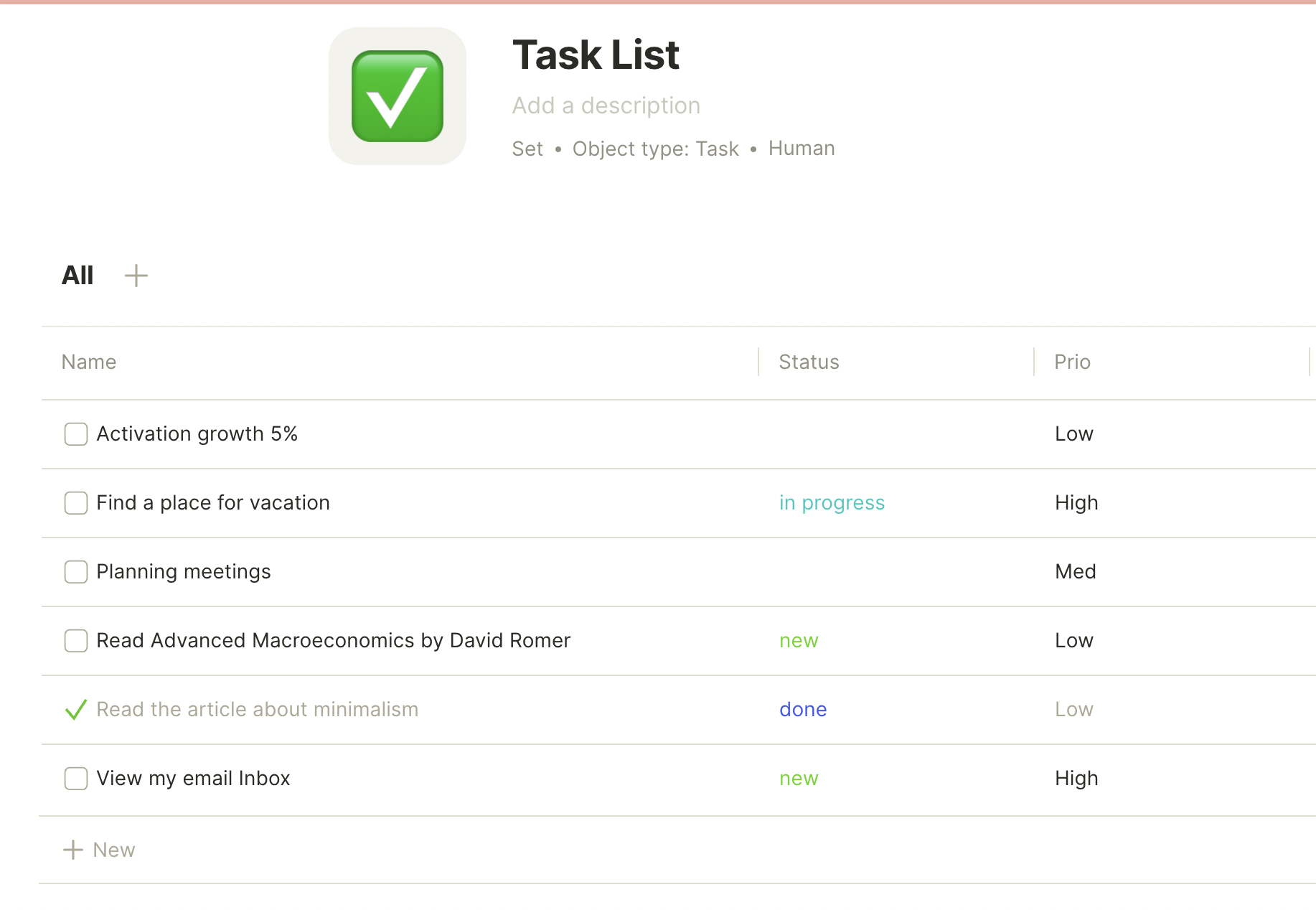Relations are key to organizing and connecting your Objects and knowledge in Anytype. There are two functions that Relations serve in Anytype:
- Defining attributes: You can use Relations to define the characteristics of a certain Object.
- For example, when creating a Task in Anytype, you can add Relations such as Status: Done/Not Done, or Priority: Low, Medium, or High.
- If we were to imagine a database, Relations represent the column headers to each row (where column A represents the Object name, and where each row represents an Object).
- Once you have set your attributes, it becomes possible to sort and filter your Objects according to the Relations you've defined in Set View.
- Defining connections: You can also use Relations to link one Object to another.
- Returning to the example of a Task, you can add the Relation: Assignee, and assign another Object in your Anytype to this task.
- As above, you can view the Assignees as Relations in Set view, or in Graph view.
